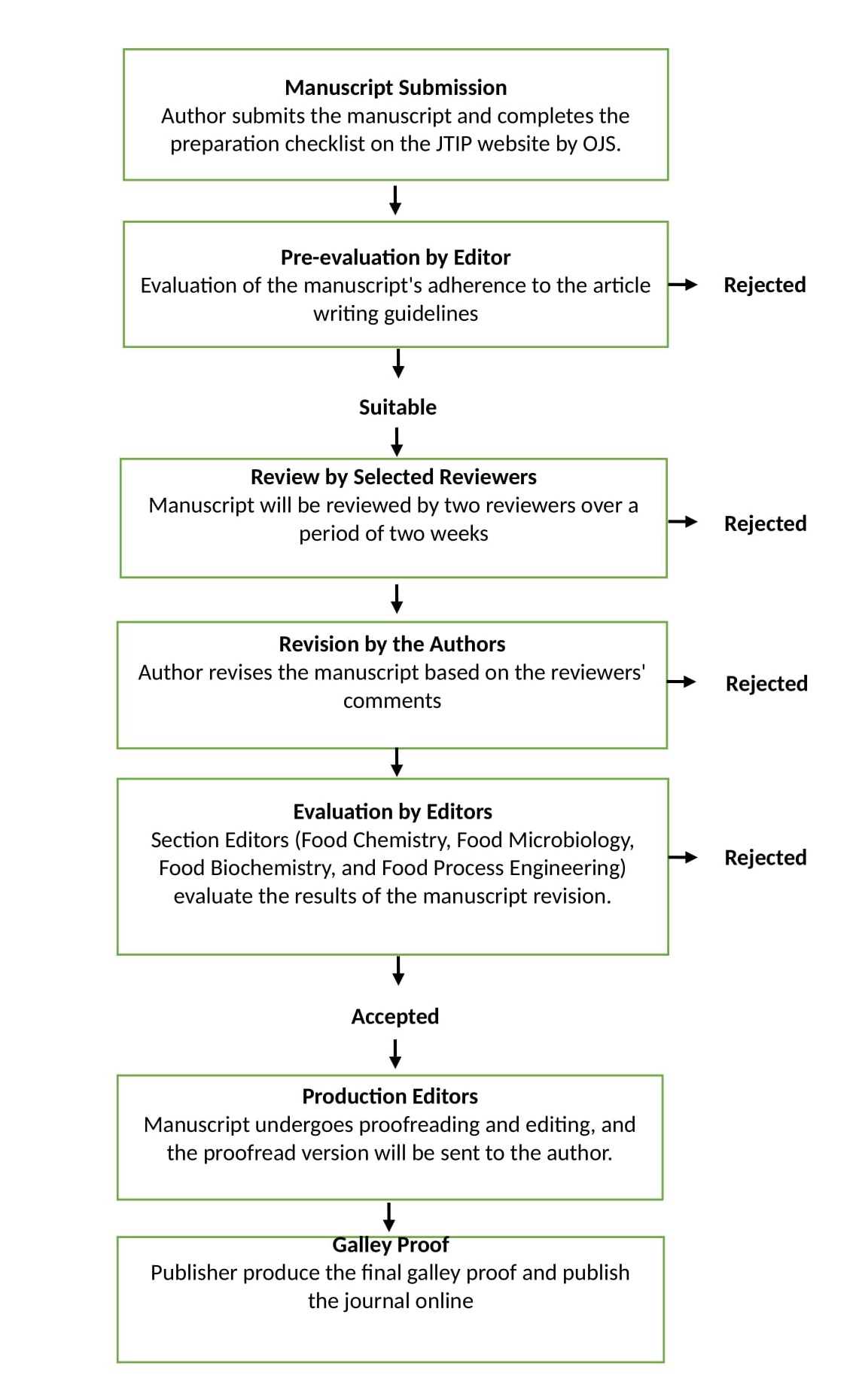Peer-Review Process
Every submitted paper will be reviewed through a double-blind review process. Reviewers are unaware of the identity of the authors, and authors are also unaware of the identity of reviewers. The review process will evaluate the manuscript based on its novelty, objectivity, methodology, scientific impact, conclusion, and references. Plagiarism screening will be conducted using the Turnitin application. The final decision will be made by the Chief Editor. Here are the steps in the Peer Review Process-JTIP.
- The first step is the submission of the manuscript. Manuscripts must be prepared using the manuscript format (JTIP Article Template). The author is required to submit an Authors Agreement declaration along with any other necessary supporting documents. The submission process can be done here.
- The secretariat will receive the manuscript. The Chief Editor screens the suitability of the manuscript with the writing guidelines. Manuscripts that are not suitable will be returned to the author, while suitable manuscripts will be forwarded to the associate editor. Next, two Associate Editors will evaluate the alignment of the manuscript's topic with the scope of JTIP. The Associate Editor will assess the manuscript's novelty, objectivity, method, and scientific impact. Unsuitable topics will be declined, while suitable ones will proceed to the Reviewer.
- The reviewer will conduct a thorough review of the manuscript over a period of two weeks, and then the review results will be forwarded to the secretariat. Next, the chief editor will assess the manuscript's status (Feasible/Minor/Major/Reject) based on the reviewer's evaluation. The decision made by the Chief Editor, along with the reviewer's comments, will be conveyed to the author.
- The author should revise the manuscript based on the reviewers' comments and submit the revised manuscript within two weeks of receiving feedback from the secretariat.
- After the author submits the revised manuscript, the editorial team, consisting of four divisions (Food Chemistry, Food Microbiology, Food Biochemistry, and Food Process Engineering), will review the revisions. A decision will be made to determine if the revisions are appropriate; if they are not, the manuscript will be returned to the author. If the revisions are satisfactory, the manuscript will be forwarded to the Chief Editor.
- The Chief Editor will then determine the final status of the manuscript. Accepted manuscripts will be followed up by an Acceptance Letter from the Secretariat/Journal Manager, which will be sent to the author.
- The next step involves the production of the galley proof and manuscript editing by the Editing Editor.
- The Secretariat/Journal Manager will send the galley proof to the author for review and revision. The Secretariat/Publisher will then receive the corrected galley proof from the author.
- The Secretariat/Publisher will produce the final galley proof.
- The Secretariat/Publisher will publish the journal online. At this stage, they will verify the metadata in OJS, including the author name, affiliation, abstract, keywords, and references, upload the articles online, assign a DOI, and update metadata on Google Scholar and DOAJ.

